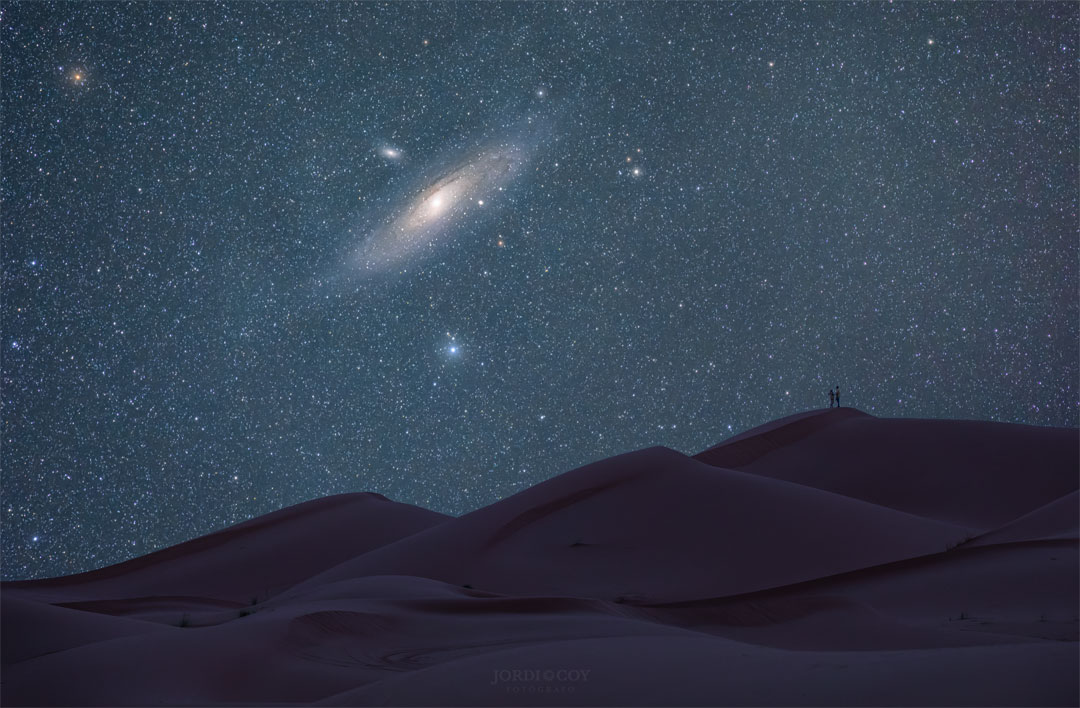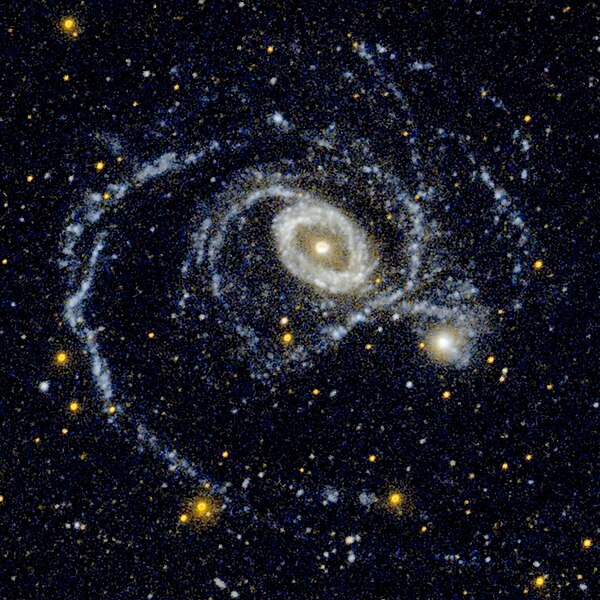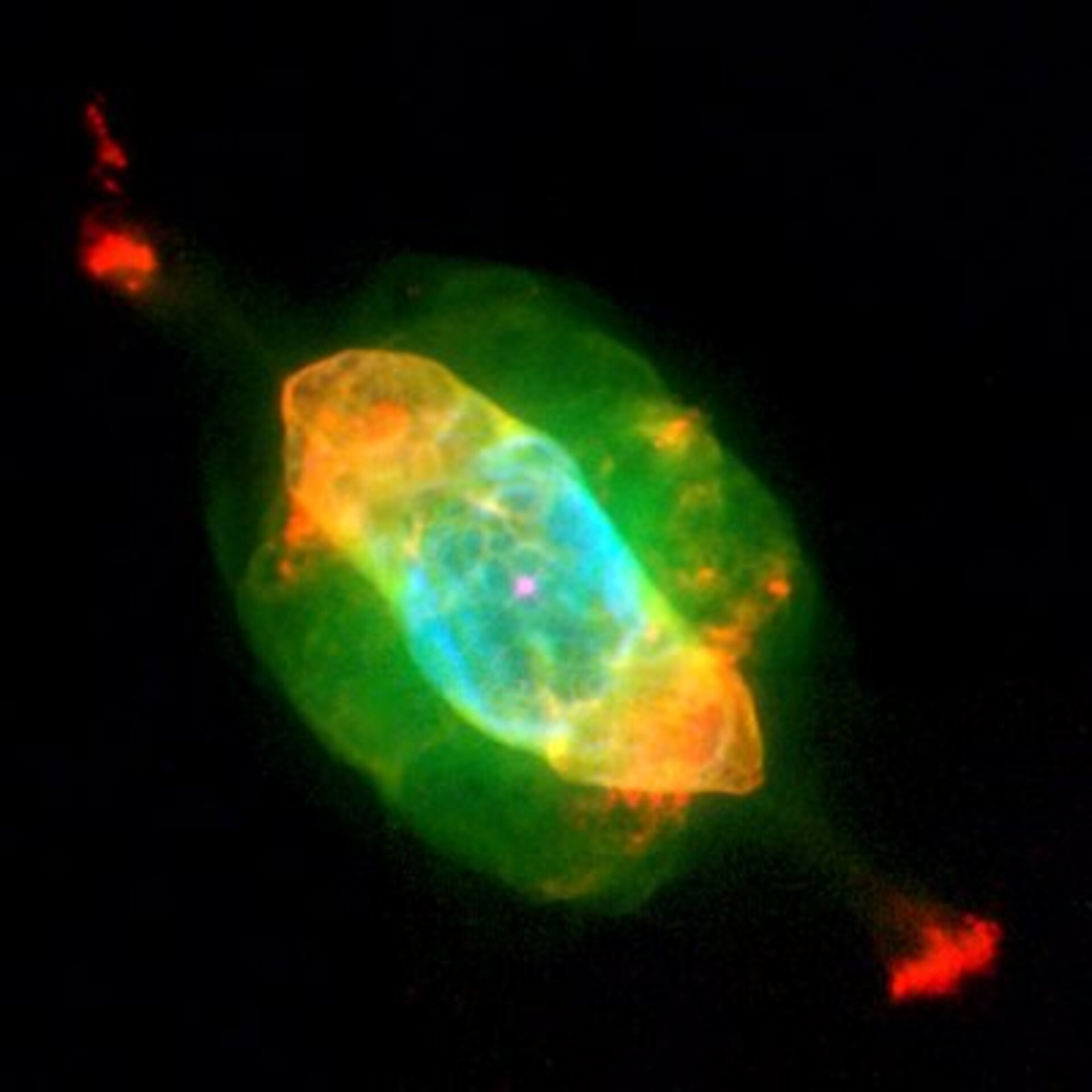APOD: In the Center of the Cat's Eye Nebula (2022 Jul 10)
Re: APOD: In the Center of the Cat's Eye Nebula (2022 Jul 10)
Doesn't require any experience. Everyone I have shown these two can see the the colour without any prompting. Even people who have never looked through a scope in their life before.
- Chris Peterson
- Abominable Snowman
- Posts: 18599
- Joined: Wed Jan 31, 2007 11:13 pm
- Location: Guffey, Colorado, USA
- Contact:
Re: APOD: In the Center of the Cat's Eye Nebula (2022 Jul 10)
I don't know who you have shown, but very few people can see color in any deep sky objects.
Chris
*****************************************
Chris L Peterson
Cloudbait Observatory
https://www.cloudbait.com
*****************************************
Chris L Peterson
Cloudbait Observatory
https://www.cloudbait.com
- Fred the Cat
- Theoretic Apothekitty
- Posts: 975
- Joined: Mon Feb 22, 2016 4:09 pm
- AKA: Ron
- Location: Eagle, Idaho
Re: APOD: In the Center of the Cat's Eye Nebula (2022 Jul 10)
A person could present the "Cat's Eye" in any medium and enjoy it but many may not think it representative.
The creativity that inspired it, is left for the eye of the beholder. 
Freddy's Felicity "Only ascertain as a cat box survivor"
Re: APOD: In the Center of the Cat's Eye Nebula (2022 Jul 10)
Certainly, Chris.Chris Peterson wrote: ↑Sun Jul 10, 2022 10:32 pmJust ask anybody who has ever observed deep sky objects directly.
Do I take it that you think that all astroimages should show only what the human eye can observe directly through a telescope?
Consider the APOD of July 11, 2022, and compare it with what a direct observation of the same object might look like:
Wide field Andromeda. Image: tavaresjr.
Is it fair to show as much detail in Andromeda as we can see in today's APOD? When direct observation through a telescope may not reveal much more than what can be seen in tavaresjr's image?
Ann
Color Commentator
- Chris Peterson
- Abominable Snowman
- Posts: 18599
- Joined: Wed Jan 31, 2007 11:13 pm
- Location: Guffey, Colorado, USA
- Contact:
Re: APOD: In the Center of the Cat's Eye Nebula (2022 Jul 10)
No. But color loses most of its meaning when you are talking about things that the eye cannot perceive. Color is physiology, not physics.Ann wrote: ↑Mon Jul 11, 2022 4:17 amCertainly, Chris.Chris Peterson wrote: ↑Sun Jul 10, 2022 10:32 pmJust ask anybody who has ever observed deep sky objects directly.
Do I take it that you think that all astroimages should show only what the human eye can observe directly through a telescope?
Chris
*****************************************
Chris L Peterson
Cloudbait Observatory
https://www.cloudbait.com
*****************************************
Chris L Peterson
Cloudbait Observatory
https://www.cloudbait.com
Re: APOD: In the Center of the Cat's Eye Nebula (2022 Jul 10)
But wavelengths are physics. Relative wavelengths are physics, too.Chris Peterson wrote: ↑Mon Jul 11, 2022 4:40 amNo. But color loses most of its meaning when you are talking about things that the eye cannot perceive. Color is physiology, not physics.Ann wrote: ↑Mon Jul 11, 2022 4:17 amCertainly, Chris.Chris Peterson wrote: ↑Sun Jul 10, 2022 10:32 pm
Just ask anybody who has ever observed deep sky objects directly.
Do I take it that you think that all astroimages should show only what the human eye can observe directly through a telescope?
In both Spitzer Space Telescope infrared images and GALEX ultraviolet images, shorter wavelengths were mapped as blue or cyan, and longer wavelengths were mapped as red or yellow. This makes perfect sense to me.
In SDSS g-r-i images of galaxies, green wavelengths are mapped as blue, red wavelengths are mapped as green and infrared wavelengths are mapped as red. Again shorter wavelengths are mapped as bluer hues and longer wavelengths are redder hues. Again, this makes perfect sense to me (and it has the consequence that red emission nebulas look green or cyan-colored in SDSS images, while individual cool stars tend to look very red).
But why does the Saturn Nebula look like that in a Hubble image? It makes no sense to me.
Ann
Color Commentator
- Chris Peterson
- Abominable Snowman
- Posts: 18599
- Joined: Wed Jan 31, 2007 11:13 pm
- Location: Guffey, Colorado, USA
- Contact:
Re: APOD: In the Center of the Cat's Eye Nebula (2022 Jul 10)
Relative wavelengths are particularly irrelevant when we're considering narrow band images.Ann wrote: ↑Mon Jul 11, 2022 5:47 amBut wavelengths are physics. Relative wavelengths are physics, too.Chris Peterson wrote: ↑Mon Jul 11, 2022 4:40 amNo. But color loses most of its meaning when you are talking about things that the eye cannot perceive. Color is physiology, not physics.
I don't know why it makes no sense to you. Is it confusing that you say hej då and I say goodbye? Different sounds with the same meaning. Why is translating wavelengths to colors any different?
But why does the Saturn Nebula look like that in a Hubble image? It makes no sense to me.
Chris
*****************************************
Chris L Peterson
Cloudbait Observatory
https://www.cloudbait.com
*****************************************
Chris L Peterson
Cloudbait Observatory
https://www.cloudbait.com
Re: APOD: In the Center of the Cat's Eye Nebula (2022 Jul 10)
Perhaps we should say hej då and goodbye to this discussion, Chris?Chris Peterson wrote: ↑Mon Jul 11, 2022 12:03 pmRelative wavelengths are particularly irrelevant when we're considering narrow band images.Ann wrote: ↑Mon Jul 11, 2022 5:47 amBut wavelengths are physics. Relative wavelengths are physics, too.Chris Peterson wrote: ↑Mon Jul 11, 2022 4:40 am
No. But color loses most of its meaning when you are talking about things that the eye cannot perceive. Color is physiology, not physics.I don't know why it makes no sense to you. Is it confusing that you say hej då and I say goodbye? Different sounds with the same meaning. Why is translating wavelengths to colors any different?
But why does the Saturn Nebula look like that in a Hubble image? It makes no sense to me.
You and I view color in the Universe in a fundamentally different way. To me color in astronomical objects is certainly a very subjective thing and a source of great joy, but it is also precise physical parameter. In the latter case, we are talking wavelengths, of course, not the conversion by the human eye and brain into the subjective sensation that we call color.
To me, color is hugely important, both when it comes to my own sense of aesthetics and when it comes to understanding the fundamental properties of an object through the wavelengths emitted or reflected by the object in question. To me, the color (or wavelength) of an astronomical object is no more trivial than the size, mass or shape of the object.
I'm sure you know that. And you don't agree with me. So let's agree to disagree. I'll keep claiming that an APOD portrait of an object gives us a good, or a misleading, idea of what the object's "natural", or optical, or visual, color is. And you are going to tell everyone here that I'm talking nonsense.
That's okay. You and I disagree on color. Let's leave it at that and say hej då and goodbye, until there is another APOD whose "color portrait" of an object prompts me to explain the properties of the object from its ("true") color.
Ann
Color Commentator
- Chris Peterson
- Abominable Snowman
- Posts: 18599
- Joined: Wed Jan 31, 2007 11:13 pm
- Location: Guffey, Colorado, USA
- Contact:
Re: APOD: In the Center of the Cat's Eye Nebula (2022 Jul 10)
I don't disagree with that much. But I will not agree to agree with you calling any color scheme "wrong". Because that is wrong, and I'll call you out every time!Ann wrote: ↑Mon Jul 11, 2022 1:42 pmPerhaps we should say hej då and goodbye to this discussion, Chris?Chris Peterson wrote: ↑Mon Jul 11, 2022 12:03 pmRelative wavelengths are particularly irrelevant when we're considering narrow band images.I don't know why it makes no sense to you. Is it confusing that you say hej då and I say goodbye? Different sounds with the same meaning. Why is translating wavelengths to colors any different?
But why does the Saturn Nebula look like that in a Hubble image? It makes no sense to me.
You and I view color in the Universe in a fundamentally different way. To me color in astronomical objects is certainly a very subjective thing and a source of great joy, but it is also precise physical parameter. In the latter case, we are talking wavelengths, of course, not the conversion by the human eye and brain into the subjective sensation that we call color.
To me, color is hugely important, both when it comes to my own sense of aesthetics and when it comes to understanding the fundamental properties of an object through the wavelengths emitted or reflected by the object in question. To me, the color (or wavelength) of an astronomical object is no more trivial than the size, mass or shape of the object.
I'm sure you know that. And you don't agree with me. So let's agree to disagree. I'll keep claiming that an APOD portrait of an object gives us a good, or a misleading, idea of what the object's "natural", or optical, or visual, color is. And you are going to tell everyone here that I'm talking nonsense.
That's okay. You and I disagree on color. Let's leave it at that and say hej då and goodbye, until there is another APOD whose "color portrait" of an object prompts me to explain the properties of the object from its ("true") color.
Ann
Chris
*****************************************
Chris L Peterson
Cloudbait Observatory
https://www.cloudbait.com
*****************************************
Chris L Peterson
Cloudbait Observatory
https://www.cloudbait.com
Re: APOD: In the Center of the Cat's Eye Nebula (2022 Jul 10)
Do that, Chris, because the word "wrong" is particularly useless as a description of color in astronomical objects. The adjective is provocative and annoying, but practically devoid of all precise information.Chris Peterson wrote: ↑Tue Jul 12, 2022 1:54 pm
I don't disagree with that much. But I will not agree to agree with you calling any color scheme "wrong". Because that is wrong, and I'll call you out every time!
Ann
Color Commentator
- Chris Peterson
- Abominable Snowman
- Posts: 18599
- Joined: Wed Jan 31, 2007 11:13 pm
- Location: Guffey, Colorado, USA
- Contact:
Re: APOD: In the Center of the Cat's Eye Nebula (2022 Jul 10)
Well, speaking of color, I'm sure you'll appreciate this, taken at 3700 meters on a hike yesterday. Chiming Bells and Columbine. There were blue wildflowers everywhere. Nothing wrong about these colors!Ann wrote: ↑Tue Jul 12, 2022 5:20 pmDo that, Chris, because the word "wrong" is particularly useless as a description of color in astronomical objects. The adjective is provocative and annoying, but practically devoid of all precise information.Chris Peterson wrote: ↑Tue Jul 12, 2022 1:54 pm
I don't disagree with that much. But I will not agree to agree with you calling any color scheme "wrong". Because that is wrong, and I'll call you out every time!
Ann
_
Chris
*****************************************
Chris L Peterson
Cloudbait Observatory
https://www.cloudbait.com
*****************************************
Chris L Peterson
Cloudbait Observatory
https://www.cloudbait.com
- VictorBorun
- Captain
- Posts: 1136
- Joined: Fri Oct 16, 2020 10:25 pm
- Contact:
Re: APOD: In the Center of the Cat's Eye Nebula (2022 Jul 10)
Here come new images from Webb, with its wild wide band, far IR having 10 times lower resolution than near IR.Ann wrote: ↑Mon Jul 11, 2022 5:47 am But wavelengths are physics. Relative wavelengths are physics, too.In both Spitzer Space Telescope infrared images and GALEX ultraviolet images, shorter wavelengths were mapped as blue or cyan, and longer wavelengths were mapped as red or yellow. This makes perfect sense to me.In SDSS g-r-i images of galaxies, green wavelengths are mapped as blue, red wavelengths are mapped as green and infrared wavelengths are mapped as red. Again shorter wavelengths are mapped as bluer hues and longer wavelengths are redder hues. Again, this makes perfect sense to me (and it has the consequence that red emission nebulas look green or cyan-colored in SDSS images, while individual cool stars tend to look very red).
But why does the Saturn Nebula look like that in a Hubble image? It makes no sense to me.
Ann
To fully use human vision, we should encode the longest waves in blue sub-pixels of an RGB picture.
To preserve the monotony even if takes to inverse it we should encode the shortest waves in red.
It would take time to get used to that legend where hot is red and cold is blue (and halfway warm-cool is not gray, but rather green), but what other way is there?
Re: APOD: In the Center of the Cat's Eye Nebula (2022 Jul 10)
Thanks, Chris, they are lovely!Chris Peterson wrote: ↑Tue Jul 12, 2022 6:06 pmWell, speaking of color, I'm sure you'll appreciate this, taken at 3700 meters on a hike yesterday. Chiming Bells and Columbine. There were blue wildflowers everywhere. Nothing wrong about these colors!Ann wrote: ↑Tue Jul 12, 2022 5:20 pmDo that, Chris, because the word "wrong" is particularly useless as a description of color in astronomical objects. The adjective is provocative and annoying, but practically devoid of all precise information.Chris Peterson wrote: ↑Tue Jul 12, 2022 1:54 pm
I don't disagree with that much. But I will not agree to agree with you calling any color scheme "wrong". Because that is wrong, and I'll call you out every time!
Ann
_
Ann
Color Commentator
- Chris Peterson
- Abominable Snowman
- Posts: 18599
- Joined: Wed Jan 31, 2007 11:13 pm
- Location: Guffey, Colorado, USA
- Contact:
Re: APOD: In the Center of the Cat's Eye Nebula (2022 Jul 10)
Monotonicity, please! Monotony is very different, and not to be found in the JWST images. :lol2:VictorBorun wrote: ↑Tue Jul 12, 2022 6:11 pm To preserve the monotony even if takes to inverse it we should encode the shortest waves in red.
Chris
*****************************************
Chris L Peterson
Cloudbait Observatory
https://www.cloudbait.com
*****************************************
Chris L Peterson
Cloudbait Observatory
https://www.cloudbait.com
Re: APOD: In the Center of the Cat's Eye Nebula (2022 Jul 10)
Got to show you perhaps the most beautiful picture I have seen, fittingly called "The Blue Universe" by Japanese photographer Hiroki Kondo:
Amazing, isn't it?
Ann
Amazing, isn't it?
Amazing, isn't it? Sigh! Sometimes we can see heaven on Earth. Or - wait! I take that back! Sometimes we can really see that the Earth is the heaven of the Universe. At the very least, it sure looks like it sometimes!National Geographic wrote:
THE BLUE UNIVERSE
About 4.5 million Nemophila menziesii—a California wildflower commonly known as baby blue eyes—carpet the hills at Hitachi Seaside Park in Japan. According to photographer Hiroki Kondo, who calls this landscape “the blue universe,” the flowers peak from the end of April to the first week of May.
Ann
Last edited by Ann on Tue Jul 12, 2022 6:54 pm, edited 1 time in total.
Color Commentator
- johnnydeep
- Commodore
- Posts: 3232
- Joined: Sun Feb 20, 2011 8:57 pm
Re: APOD: In the Center of the Cat's Eye Nebula (2022 Jul 10)
Nice. All that's missing is a stretch of nice blue ocean between earth and sea!Ann wrote: ↑Tue Jul 12, 2022 6:34 pm Got to show you perhaps the most beautiful picture I have seen, fittingly called "The Blue Universe" by Japanese photographer Hiroki Kondo:
A blue universe in Japan Hiroki Kondo.png
Amazing, isn't it?
Amazing, isn't it? Sigh! Sometimes we can see heaven on Earth. Or - wait! I take that back! Sometimes we can really see that the Earth is the heaven of the Universe. At the very least, it sure looks like it sometimes!National Geographic wrote:
THE BLUE UNIVERSE
About 4.5 million Nemophila menziesii—a California wildflower commonly known as baby blue eyes—carpet the hills at Hitachi Seaside Park in Japan. According to photographer Hiroki Kondo, who calls this landscape “the blue universe,” the flowers peak from the end of April to the first week of May.
Ann
--
"To B̬̻̋̚o̞̮̚̚l̘̲̀᷾d̫͓᷅ͩḷ̯᷁ͮȳ͙᷊͠ Go......Beyond The F͇̤i̙̖e̤̟l̡͓d͈̹s̙͚ We Know."{ʲₒʰₙNYᵈₑᵉₚ}
"To B̬̻̋̚o̞̮̚̚l̘̲̀᷾d̫͓᷅ͩḷ̯᷁ͮȳ͙᷊͠ Go......Beyond The F͇̤i̙̖e̤̟l̡͓d͈̹s̙͚ We Know."{ʲₒʰₙNYᵈₑᵉₚ}
Re: APOD: In the Center of the Cat's Eye Nebula (2022 Jul 10)
Nice! I especially like the color in the shade of the tree.Ann wrote: ↑Tue Jul 12, 2022 6:34 pm Got to show you perhaps the most beautiful picture I have seen, fittingly called "The Blue Universe" by Japanese photographer Hiroki Kondo:
...
Amazing, isn't it? Sigh! Sometimes we can see heaven on Earth. Or - wait! I take that back! Sometimes we can really see that the Earth is the heaven of the Universe. At the very least, it sure looks like it sometimes!
Ann
It is nice of the Japanese to allow these Californians to flourish.
Mark Goldfain




